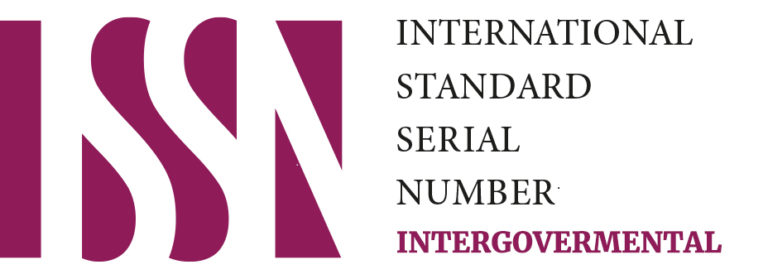ABSTRACT
This article focuses on how global or international governance can combat terrorism. It assumes that terrorism is not random, undirected, and purposeless violence. Terrorists and those who support them have definitive goals, and terrorist violence is the means of achieving them. Also, due to globalization, today’s threats see no boundaries and need to be dealt with nationally, regionally, globally, and in unison. Therefore, the paper argues that international or global governance is the most effective antidote against terror.
INTRODUCTION
The world periodically experiences spasms of terrorism. The fact that people are intimidated by terror is not a new phenomenon; it has existed throughout the history of humankind. However, it was not until the 1970s that international terrorism established itself to be a force to reckon with. Terrorism is a phenomenon that is easier to describe than to define. The United Nations Security Council has grappled with definitional issues of global terrorism for years. The problem of finding the correct definition is compounded by the fact that terrorism has become a fad word’ used and often applied to various acts of violence. This difficulty in defining the term has led to the cliché that “one man’s terrorist is another man’s freedom-fighter.”1
Although it is difficult to reach a consensus about the definition of terrorism, a few scholars have managed to come up with their descriptions. For example, Mockaitis defined terrorism as “violence, or the threat of violence, calculated to create an atmosphere of fear and alarm in the pursuit of political aims.”2 However, most current definitions classify an act as terrorism based on three broad criteria: target, weapon, and perpetrator. Nevertheless, terrorism is the employment of terror as a weapon of psychological warfare for political ends in political terms.3 Former United Nations Secretary-General Kofi Anan noted that “regardless of the differences between governments on the definition of terrorism, what is clear and what we all can agree on is any deliberate attack on innocent civilians, regardless of one’s cause, is unacceptable and fits into the definition of terrorism.”
This paper assumes that terrorism is not random, undirected, and purposeless violence. Terrorists and those who support them have definitive goals, and terrorist violence is the means of achieving them. The stated goals or objectives vary greatly, ranging from separatist causes and revenge for ethnic grievances to social, political, and religious revolutions. This paper, therefore, argues that the most effective antidote against terror is international or global governance.
The article is structured into four parts. The first section will focus on the nature of global terrorism and how it has transformed within the last few decades. The second section will look at the notion of international governance. The third section will focus on why international/global governance is suitable for dealing with terrorism. The last section will focus on what international/global governance must do to combat global terrorism.
The Nature of Global Terrorism
Analysis of contemporary terrorism often lacks historical perspective leading to two mistaken understandings. First, terrorism today differs only by degree from terrorism over past decades or even centuries. Second, modern terrorists like al-Qaeda and Al Shabab represent a new phenomenon. However, it is worth noting that nothing is unique in the world of terrorists because they often develop from past ones and adapt their strategies according to changing situations.4
Terrorism is a weapon that kingdoms, empires have used, and states to intimidate their enemies and keep their subjects in line. For instance, the Romans rewarded those who supported them and brutally punished those who rebelled.5 Public executions served a similar purpose throughout the medieval and early modern periods. The “reign of terror,” as was termed “during the French Revolution, sent more than 20,000 enemies of the state to the guillotine in months.” 6 Even in conventional conflicts, states resorted to terror. Again, during World War II, the Germans practiced a policy of Schrecklicheit (terror) in occupied territories, which stipulated that for every German soldier killed by Partisans, the Nazis should execute one hundred hostages.7
Authoritarian regimes have employed terrorist mechanisms to keep their people in line. The fascist dictators of Benito Mussolini and Francisco Franco used terror as an instrument of social control.8 The same is true about Adolph Hitler, Joseph Stalin, Muammar Gaddafi, and Saddam Hussein. The use of terror by non-state actors has ancient roots as well. For instance, the zealots poisoned wells and assassinated their enemies while revolting against the Romans.9 Terror was also a means of anti-colonial insurgency or a means for liberation. For example, Algerians used terrorist tactics during their fight for independence from the French. The same could be said about the various anti-colonial insurgencies of the past, such as the Mujahideen in Afghanistan.
Terrorism has been a persistent phenomenon for centuries. Most of the terror employed by illicit groups has served the more prominent political goals of power control within a particular state or region, as with the Islamic State (IS) and its various affiliates in developing countries. Despite widespread belief, contemporary terrorists usually promote an agenda with geographically focused goals. Al Qaeda, Al Shabab, and Boko Haram have always been most concerned with events in the Muslim world. The reality is that the world now faces security threats that go far beyond states waging aggressive war. Terrorism in the past was regionally based, but due to globalization, today’s threats see no boundaries and hence need to be dealt with nationally, regionally, and globally. As steven Lee notes, “it is the nature of a non-state threat that it can be effectively fought only through international cooperation.” 10
The Notion of Global Governance
A few scholars argued that global governance is the antidote against terror but what is global governance? Global governance is not a new concept. It began in the mid-nineteenth century and accelerated after the First World War. Many states, led by the United States, “set out to create a new and comprehensive set of international organizations to tackle a growing list of shared global challenges.” 11 Since World War II, global governance has expanded to reflect the most critical normative issues. These have included human rights, development, democratization, the environment, free trade, arms control and disarmament, and global knowledge flows.12 It is a product of neo-liberal paradigm shifts in international political and economic relations in which capital and market mechanisms are privileged over state authority and thus leading to a governance gap. In the process, “actors from private and civil society sectors assume authoritative roles previously considered the purview of the state.” 13
In other words, global governance gained more momentum as the world encountered complex issues due to globalization that unilateral action, even by a superpower like the United States, would not suffice. These include climate change, weapons of mass destruction (WMD), genocide, terrorism, and financial instabilities. Addressing these collective problems requires new tools, mechanisms, and global governance, which refers to existing collective arrangements to solve problems. Weiss and Thakur define global governance as “the complex of formal and informal institutions, mechanisms, relationships, and processes between and among states, markets, citizens, and organizations – both intergovernmental and non-governmental – through which collective interests are articulated.” 14
For Karns and Mingst, global governance is “the multi-level collection of governance-related activities, rules, and mechanisms, formal and informal, public and private, existing in the world today.” 15 Furthermore, Benedict sees “global governance as a purposeful order that emerges from institutions, processes, norms, formal agreements, and informal mechanisms that regulate action for the common good.” 16 Rosenau considers global governance “the sum of myriad –millions of – control mechanisms driven by different histories, goals, structures, and processes.” 17 Global governance, in a sense, implies the emergence of normative order. The Commission on Global Governance defines governance as “the sum of the many ways individuals and institutions, public and private, manage their common affairs.” 18
Nevertheless, some scholars argue that global governance as it is practiced is not working.19 In contrast, “others believe that global governance is constantly adapting by readjusting strategies and approaches to solutions and developing new tools and measures to deal with issues impacting communities worldwide.” 20 For this group, global governance is a tool to identify solutions to problems created by neoliberal globalization.21 The concept of global governance relates to the interaction of various collective or individual entities emanating from different societal and professional orientations, which form networks that engage in addressing issues that threaten local and global communities. Global governance is concerned with problems that have become too complex for a single state to handle alone.
Global governance is a multifaceted phenomenon that prominently features power, rules, ideas, norms, culture, regimes, and institutions. According to Makinda, “it is a contested terrain on which deconstruction and reconstruction, affirmation and denial, and legitimation and delegitimation take place.” 22 The Commission on Global Governance argues that governance is “a continuing process through which conflicting and diverse interests may be accommodated, and cooperative action may be taken.” 23 The rights and responsibilities of human beings, states, and other international actors are at the core of the present global governance system.24
However, it is crucial to distinguish between the concept and practice of global governance. According to Makinda, global governance at the conceptual level is a structure predicted on tolerance and a willingness to recognize and manage differences and reconcile self to others and us to them.25 It is a system that acknowledges that the boundaries between inside and outside, between public and private, and between domestic and external have become increasingly thin. Whereas in practice, global governance assumes power politics dimension. In other words, it reflects the interests and preferences of the great powers. While middle powers and even NGOs may champion some norms and rules, these other actors may themselves be products of the system constructed by the great powers, and much of what they advocate is consistent with hegemonic interests.26 However, undermining global governance can encourage other actors, state and non-state, to take the law into their own hands. In other words, non-compliance with international norms, rules, and institutions by the United States can inadvertently foster terrorism.27
Suitability of Global Governance
Many activities must be undertaken to prevent terrorism. For instance, terrorist operatives must be kept track of as they move worldwide. Terrorist suspects must be apprehended wherever they have fled. Terrorist finances must be monitored and prohibited as they move from bank to bank across the globe. Organizing efforts by terrorist groups in different parts of the world must be followed and interrupted. Additionally, global technology transfers that might get to terrorists’ hands must be caught and stopped.28
Furthermore, the international anti-proliferation regime must be strengthened, especially regarding securing fissile material to keep weapons and weapons components out of the hands of terrorists. Intervention may be necessary in cases where terrorists find a haven in states not cooperative with the international anti-terrorist efforts (rogue states) or in failed states. Many of these tasks can be effectively undertaken through international cooperation. Therefore, global governance through its various pieces is critical to keeping track of and preventing the terrorists, their financing, and the weapons they seek to achieve the destruction they desire to inflict. But how international governance can accomplish that is the focus of the next section.
How Global Governance Must Combat Terrorism
It is essential to state that global governance’s role in combating terrorism depends on how the international actors decide to use it. Global governance can combat terrorism at two levels; through international regimes and by removing the conditions that may cause terrorism. At the level of regimes, the United Nations, as the center pin of global governance, provides the primary platform. The battle against terrorism is integral to the entire mandate of the UN. The UN Charter sets out the organization’s purposes, which include the maintenance of international peace and security, collecting measures to prevent threats of stability, suppression of aggression, promotion of human rights, and economic development.
However, due to globalization, today’s threats see no boundaries and need to be dealt with nationally, regionally, globally, and in unison. As Smith noted, under this auspice, the UN should take center stage as a vehicle for dialogue.29 Hence, the requirement of a collective approach and responsibility is inevitable. This indicates that the UN has an indispensable role in the war against global terrorism by providing the legal and organizational framework to unfold the international campaign against terrorism. The UN passed 19 legal instruments related to counterterrorism, including international conventions and protocols on terrorism.30 These are mainly concerned with operational strategies to combat terrorism and constitute the basic legal framework for global terrorism governance.
In 1999, the UN Security Council, for the first time, adopted Resolution 1269, which condemned all acts, methods, and practices of terrorism as criminal and unjustifiable, in particular those which could threaten international peace and security. It further called upon all States to implement fully the international anti-terrorist conventions to which they are parties. This resolution stressed the vital role of the United Nations in strengthening international cooperation in combating terrorism and emphasized the importance of enhanced coordination among States’ global and regional organizations. Many scholars argue that Resolution 1269 opened a new chapter in the history of the UN Security Council, becoming a prologue of its systemic work on combating the terrorist danger.31
After September 11, 2001, the Security Council made significant decisions to limit using force in self-defense and for nations to take extensive measures against terrorism. For example, on September 12, 2001, Resolution 1368 was adopted unanimously. Two weeks later, the council adopted Resolution 1373, obligating all 191 UN member states to take far-reaching domestic legislative and executive actions designed to prevent and suppress future terrorist activities. These two UN resolutions took unprecedented steps to legitimize military action against terrorism and globalize the ban on terrorism.
In addition to these main resolutions, the establishment of the Counter-Terrorism Committee (CTC) by the Security Council has further strengthened the UN’s role in the global war on terrorism. In fact, with the Council of the Counterterrorism Committee (CTC) establishment, a mechanism for global monitoring of compliance by the UN member states of their obligations under the 12 basic anti-terrorism conventions has been set up; a pioneer mechanism, not yet ideal, but improving itself.32 Other Security Council monitoring mechanisms on the anti-terrorist track were also being formed. For example, the Committee operating under SC Resolution 1267 is responsible for the observance of the regime of sanctions based on the list of members of the Al-Qaeda organization and the Taliban and other individuals, groups, undertakings, and entities associated with them that it draws up.33
In sum, Resolution 1269 essentially opened a new chapter in the history of the UN Security Council, becoming a prologue of its systemic work on combating the terrorist danger. Resolutions 1373 (2001) and 1566 (2004) are significant landmarks on this road. The first of them will go down in history if only because it classified acts of terrorism as a threat to international peace and security, thus invoking Chapter VII of the UN Charter, binding upon all states, for anti-terrorist cooperation purposes. Resolution 1373 requires all members of the United Nations to make it a crime to assist terrorist activities, deny financial support and safe haven to terrorists, and share information with other states about groups planning terrorist attacks.
However, these international regimes can be used to deal with some, but not all, forms of terrorism. What is needed are the political will and the resources to broaden and deepen them. Ashton Carter argues that a successful strategy against terrorism at the national level rests with an effective governance system that “cuts across all agencies of the federal government, state and local government, and the private sector.” 34 International cooperation is necessary for an effective fight against terrorism.
In addition to the UN, the International Monetary Fund (IMF) can also combat terrorism. For many years the IMF was involved in the fight against money laundering. However, this responsibility was expanded to include those aimed at combating the financing of terrorism. The International Convention for the Suppression of the Financing of Terrorism has provided a solid mandate for State Parties and non-state parties like the IMF, the legislative apparatus, to cut off the resources available to terrorists.35 The IMF has the necessary surveillance functions and financial sector expertise that makes it an essential and integral component of international efforts to combat the financing of terrorism. The IMF can fight the financing of terrorism because it is a forum for information sharing and the development and promotion of desirable policies and standards.36 In short, the IMF can contribute to combating the financing of terrorism through assessments, technical assistance, and policy advice. Additionally, combating the financing of terrorism tools can expose conspiracies to commit acts of terror, provide authorities with roadmaps to those involved in illicit activities, and lead to forfeiture of unlawfully acquired assets.
Non-governmental Organizations (NGOs) can also play a crucial role in the fight against terrorism because it advocates for oppressed communities. Various international documents have stressed the importance of NGOs involvement in a comprehensive and multi-dimensional response to the threat of terrorism. In its resolution, the UN General Assembly adopting the United Nations Global Counter-Terrorism Strategy affirmed that all UN member states to “further encourage non-governmental organizations and civil society to engage, as appropriate, on how to enhance efforts to implement the Strategy.”37 According to Sitter and Parker, “the policy tools of NGOs are particularly well suited to combating network-type terrorist groups because such groups depend on complicit society, a convincing narrative and information asymmetry vis-à-vis their supporters.” 38 They further noted that NGOs have the advantage because of their potential to challenge terrorist narratives on the ground credibly. Similarly, Michaelsen argues that civil society and NGOs should be involved in preventing and combating terrorism because they have several valuable roles to play.39 These organizations promote international law, peace, human rights, and democratic values.
Conclusion
Terrorism is indeed a phenomenon that has been around for centuries, and various legal and illegal organizations have used its tactics to accomplish different objectives. It was used by anti-colonial insurgents, freedom fighters, and those who claim to protect the ideals of a specific society (al-Qaeda). The massive scale of September 11, 2001 has changed the conception of terrorism. Through international governance, spearheaded by the United Nations, an effective antidote against terrorism may be found.
Nevertheless, the United Nations is not a perfect organization, but tackling terrorism is likely to enhance global governance and address because terrorism occurs. Through global governance, the attitudes of would-be terrorists can be remolded, their identities refashioned, and their interests refocused. As a multi-centric and protean phenomenon, global governance can address the conflicts, fractures, and other factors that give rise to terrorism. By renewing and re-emphasizing the norms, rules, and institutions that underpin global governance, the international society can most effectively tackle terrorism.
REFERENCES
- Harry Henderson, Global Terrorism, Revised Edition (New York: Facts on File, 2004), 17.
- Thomas R. Mockaitis, The “new” Terrorism: Myths and Reality (Westport, Connecticut: Praeger Security International, 2007).
- Tom Farer, Confronting Global Terrorism and American Neo-Conservatism: The Framework of a Liberal Grand Strategy (Oxford: Oxford University Press, 2008).
- Thomas R. Mockaitis, The “new” Terrorism: Myths and Reality (New Delhi: Westport, Conn.: Pentagon Press; Praeger Security International, 2007), 19.
- Joseph Montville, Track Two Diplomacy: The Arrow and the Olive Andrew Newby and Gavan Titley, “The War on Terror and Non-Alignment” Peace Review 15, 4 (2003): 483-9.
- Mockaitis, The “new” Terrorism, 20.
- Isaac Cronin, Confronting Fear: A History of Terrorism (New York: Thunder’s Mouth Press, c2002).
- Walter Laqueur, A History of Terrorism (New Brunswick, NJ: Transaction, c2001), 16.
- Steven Lee, “”International Governance and the Fight against Terrorism,” Ethics & International Affairs 20, no. 2 (2006): 242.
- Michael N. Barnett, Jon C.W. Pevehouse and Kal Raustiala, “Introduction,” in Global Governance in a World of Change, ed. Michael N. Barnett, Jon C. W. Pevehouse, and Kal Raustiala, (Cambridge: Cambridge University Press, 2021), 1-47.
- See J. A. Camilleri and J. Falk, The End of Sovereignty? The Politics of a Shrinking and Fragmenting World (Aldershot: Edward Elgar, 1992).
- Jinseop Jang, Jason McSparren & Yuliya Rashchupkina, “Global Governance: Present and Future,” Palgrave Communications 2, no. 1 (2016), 1.
- Thomas G. Weiss and Ramesh Thakur, Global Governance and the UN: An Unfinished Journey (Indiana University Press, 2010), 6.
- Margaret Karns and Karen Mingst, International Organizations: The Politics and Processes of Global Governance. 2nd ed. (Boulder, Colo.: Lynne Rienner Publishers, 2010), 4.
- Kennette Benedict, “Global Governance” in International Encyclopedia of the Social & Behavioral Sciences, Second Edition (Elsevier, 2015), 155-161.
- James N. Rosenau, “Governance in the Twenty-First Century,” in The Global Governance Reader, ed. Rorden Wilkinson (Abingdon and New York: Routledge, 2005), 48-67.
- Commission on Global Governance, Our Global Neighbourhood (Oxford: Oxford University Press, 1995), p. 2.
- Coen D and Pegram T, “Wanted: A Third Generation of Global Governance Research,” Governance: An International Journal of Policy, Administration, and Institutions; 28 no.4 (2015), 417.
- Thomas Hale and David Held, Handbook of Transnational Governance: New Institutions and Innovations (Polity Press: Cambridge, UK, 2011), 1–36.
- Frank Biermann and Philipp Pattberg, “Global Environmental Governance: Taking Stock, Moving Forward. Annual Review of Environment and Resources; 33, no. 1 (2008), 277.
- Samuel M. Makinda, “Global Governance and Terrorism” Global Change, 15, no.1 (2003), 45.
- Commission on Global Governance, Our Global Neighbourhood (Oxford: Oxford University Press, 1995), p. 2.
- Makinda, Global Governance, 46.
- Steven Lee, “International Governance and the Fight against Terrorism,” Ethics & International Affairs, 20, no.2 (2006), 244.
- Courtney B. Smith, “The United Nations as a Vehicle for Dialogue,” Peace & Change 28, no. 4 (2003): 555.
- Zeng Xianghong, “The Global Governance of Terrorism: An Assessment of Different Regimes,” Social Sciences in China 40, no. 1 (2019): 1001.
- Kennedy Graham, “The Security Council and Counterterrorism: Global and Regional Approaches to an Elusive Public Good,” Terrorism & Political Violence 17, no. 1 (2005): 37.
- Michael Chandler and Rohan Gunaratna, Countering Terrorism: Can We Meet the Threat of Global Violence? (London: Reaktion Books, 2007), 99.
- Jayantha Dhanapala, “The United Nations’ Response to 9/11,” Terrorism & Political Violence 17, no. 1 (2005): 17-23.
- Ashton B. Carter, ‘The Architecture of Government in the Face of Terrorism,” International Security, 26, no.1 (2001/02), 22.
- Glenn Gottselig and Paul Gleason, Suppressing the Financing of Terrorism: A Handbook for Legislative Drafting (International Monetary Fund, 2003), 5.
- Julianne Ams, Nadim Kyriakos-Saad, Chady El Khoury, Yasmin Almeida, Eric Robert, and Sean Hagan, “Anti-Money Laundering and Combating the Financing of Terrorism (AML/CFT),” in Anti-Money Laundering/Combating the Financing of Terrorism (AML/CFT) (International Monetary Fund, 2018), 1.
- United Nations General Assembly, The United Nations Global Counter-Terrorism Strategy, Doc. A/RES/60/288, September 8, 2006, operative paragraph 3 (d).
- Nick Sitter and Tom Parker, “Fighting Fire with Water: NGOs and Counterterrorism Policy Tools,” Global Policy, 5, no. 2 (2014), 159.
- Christopher Michaelsen, “The Role of Civil Society in Preventing and Combating Terrorism,” in OSCE Yearbook.
Publisher information: The Intergovernmental Research and Policy Journal (IRPJ) is a unique interdisciplinary peer-reviewed and open access Journal. It operates under the authority of the only global and treaty-based intergovernmental university in the world (EUCLID), with other intergovernmental organizations in mind. Currently, there are more than 17,000 universities globally, but less than 15 are multilateral institutions, EUCLID, as IRPJ’s sponsor, is the only global and multi-disciplinary UN-registered treaty-based institution.
IRPJ authors can be assured that their research will be widely visible on account of the trusted Internet visibility of its “.int” domain which virtually guarantees first page results on matching keywords (.int domains are only assigned by IANA to vetted treaty-based organizations and are recognized as trusted authorities by search engines). In addition to its “.int” domain, IRPJ is published under an approved ISSN for intergovernmental organizations (“international publisher”) status (also used by United Nations, World Bank, European Space Agency, etc.).
IRPJ offers:
- United Nations Treaty reference on your published article (PDF).
- “Efficiency” driven and “author-focused” workflow
- Operates the very novel author-centric metric of “Journal Efficiency Factor”
- Minimal processing fee with the possibility of waiver
- Dedicated editors to work with graduate and doctoral students
- Continuous publication i.e., publication of articles immediately upon acceptance
- The expected time frame from submission to publication is up to 40 calendar days
- Broad thematic categories
- Every published article will receive a DOI from Crossref and is archived by CLOCKSS






